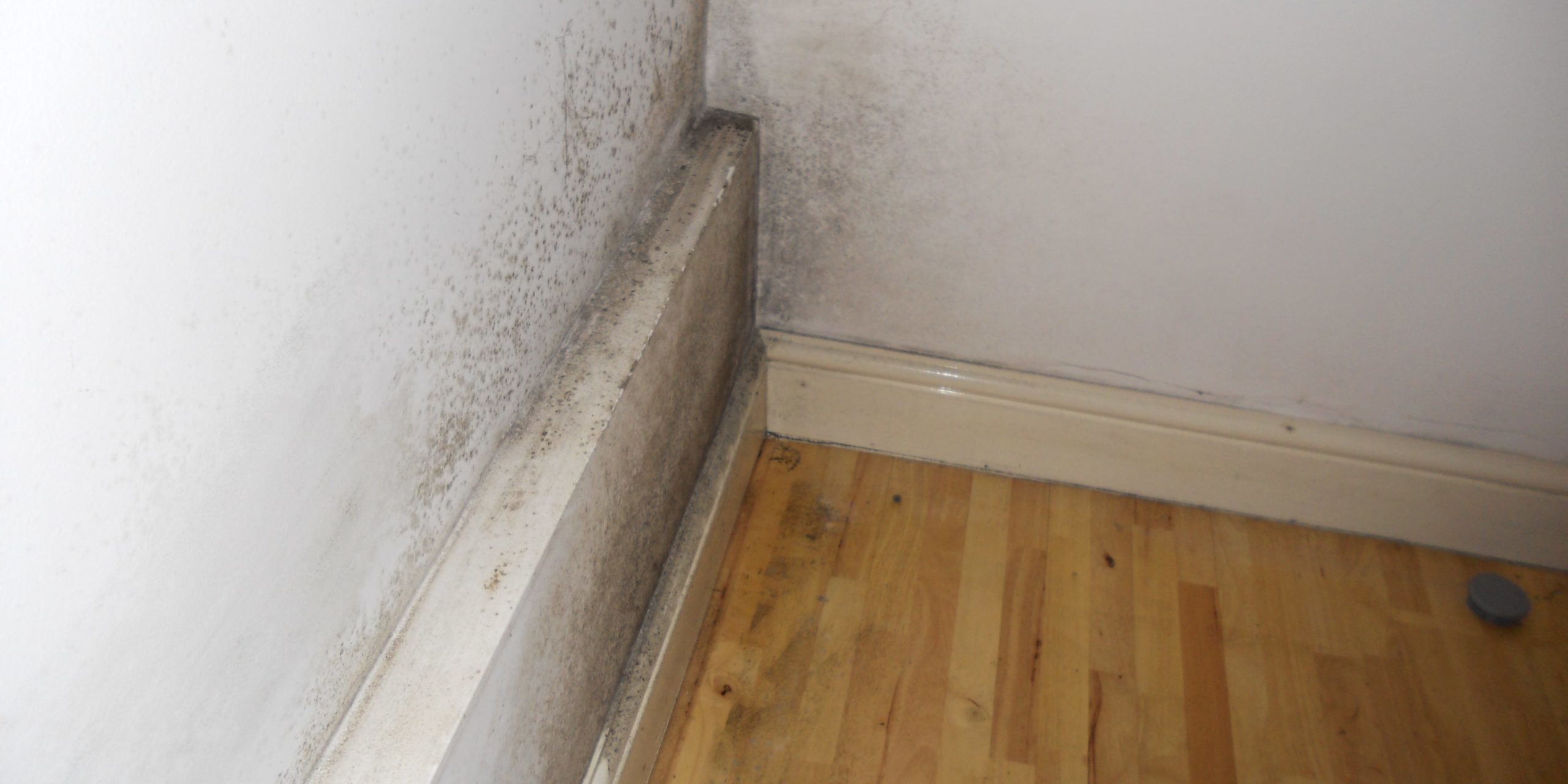There are four main types of damp walls that can affect your property: rising damp, penetrating damp, condensation and interstitial condensation. Each of these require different types of treatment, which can vary dramatically in cost, depending on both type and severity of the problem.
As such, it is important to be aware of what kind of damp you are dealing with from the offset. It is also vital to address the problem quickly, as damp can quickly spiral out of control, leading to higher removal and repair costs as well as an unsafe living environment.
What causes damp walls?
All damp is caused by excess moisture. When that moisture has no way of escaping from the property, mould can form or wetness can affect the integrity of the property, resulting in damp walls.
Learn about how moisture can lead to wet or dry rot.
There are several reasons why damp can occur in a home. Anything from bad weather to plumbing problems, damage to roofs or window frames, or generally poor ventilation can cause moisture build-up.
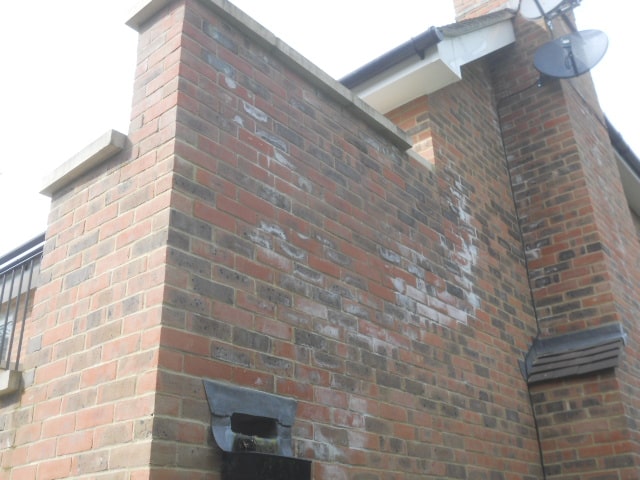
Common causes of dampness:
- Leaking pipes
- Rising damp from basements or ground floor
- Damage to roof or window frames letting in rain
- Bad weather
- Steam from cooking
- Showers and baths
- Poor ventilation
- Drying clothes indoors
- Tumble driers
- Plumbing problems
- Failed damp proofing
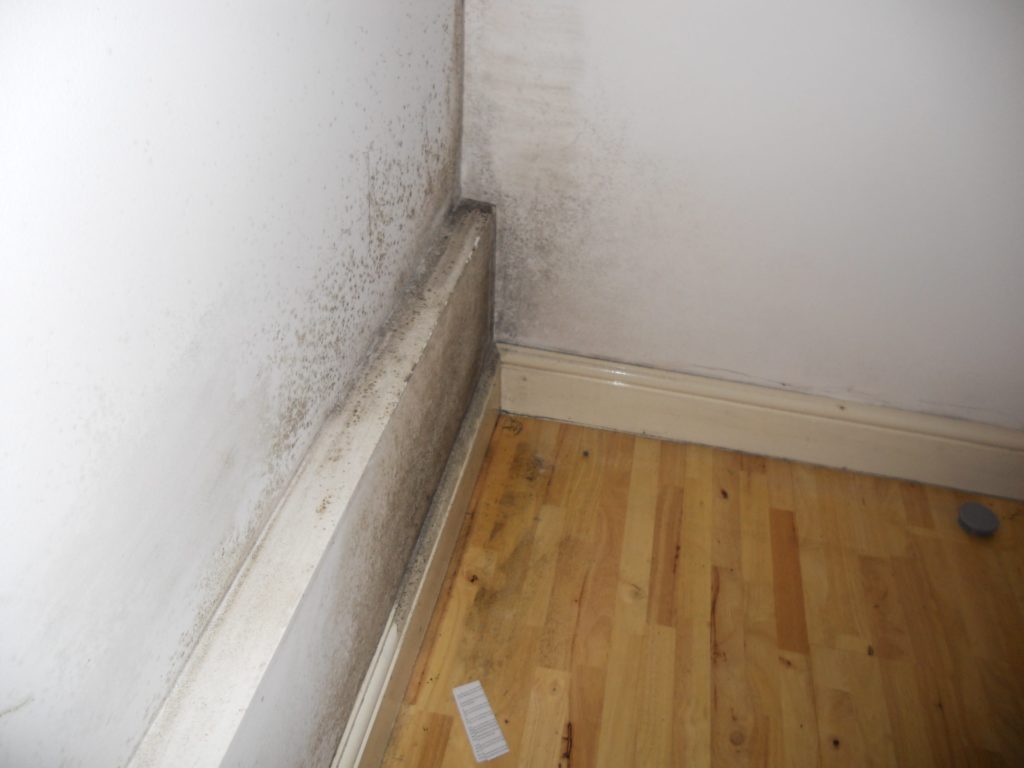
How to find the cause of damp
Given that there are so many causes of damp, it’s not always easy to pinpoint where the problem is coming from. It can take some investigating to hone in on the cause, and sometimes it’s impossible to find without removing walls or flooring. This is where a chartered surveyor can help; trained surveyors can identify sources of dampness that the untrained eye may miss.
It is important to have an accurate property valuation for insurance purposes. Should severe damage be caused to your home by damp or any other issue, being underinsured can leave you with a hefty bill. Find out more here.
Foil Test
One tried-and-tested method of working out what is causing the damp problem is the foil test. First, dry the affected area with either a hair dryer or fan heater. Then, tape some kitchen foil over the area and leave it for 24 hours. If the surface of the foil is wet after this time, you are dealing with condensation. If the foil is dry but the surface is damp, you have either penetrating or rising damp. However, if the moisture is over a metre above ground level, it is unlikely to be rising damp and is probably penetrating damp instead.
Check your plumbing
Before diagnosing penetrating damp or rising damp, make sure it isn’t just caused by faulty plumbing. Leaks in central heating pipework or other plumbing, even the smallest of pinhole leaks, can cause damp patches that look similar to rising/penetrating damp. This can be tough to see if the pipes are under the floor or within a wall, so you may need to engage the services of a chartered surveyor to help if you suspect plumbing to be the issue.
Investigate your roof
It can be difficult to see exactly where a pitched roof is leaking from. The water can trickle down the side of the rafters before reaching the floor, so pinpointing the source can be tricky.
Check any party walls or chimney stacks in the loft, or – if you’re really stuck – maybe have someone spray a hose onto the roof while you watch and see where water is coming through.
If none of this helps you to identify the cause of the leak, a chartered surveyor will be able to assist in identifying the cause of damp in a loft.
Blow off steam!
Poor ventilation and too-efficient draught-proofing can prevent steam from escaping the property. Normal, everyday life creates steam in so many ways: showers and baths, washing and drying clothes, and even cooking. Obviously, these activities are unavoidable, but doing things like opening doors and windows and using extractor fans can help.
Quick detection
For a simple way to check for damp, you can use the back of your hand to gauge the level of dampness. How damp does the affected area feel compared to a dry area? For a more accurate method, you could use a damp metre, which will give you a percentage damp level and therefore some idea of how bad the problem is.
Rising Damp
Signs of rising damp include crumbling plaster, damage to skirting boards, peeling wallpaper and external signs like white salt stains and crumbling mortar.
What causes rising damp in internal walls?
Often confused with damp caused by condensation, rising damp only happens on the ground floor. It is caused by moisture drawn up from the soil.
The most tell-tale sign of rising damp, however, is ‘tide marks’.
Water from the ground rises up through pores in the brickwork. This is known as ‘capillary action’. At some point, gravity and evaporation will prevent the pull of water any further upwards, and this is when the tide mark appears – usually about 1m above floor level. Bear in mind that paint on the wall or non-porous rendering may cause the tide mark to be visible above the 1m mark.
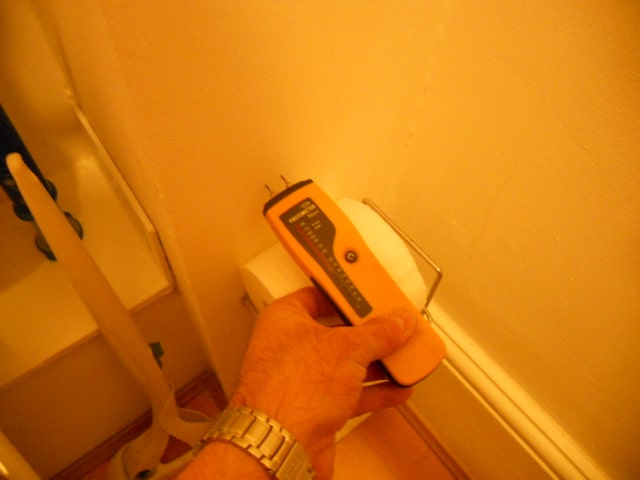
Penetrating Damp
Penetrating damp is when dampness seeps in through ceilings, floors or walls. This can cause damage to external parts of the property, including wall joints, guttering and rendering.
This can be caused by:
- Cavity wall problems
- Poor cavity insulation
- Porous bricks
- Burst pipes or gutters
- Air gaps
- Leaking walls
- Plumbing issues
You can generally spot a penetrating damp problem if you see damage to plastering, watermarks on masonry or decaying timber.
Prevention is possible by careful attention to spotting any leaks and ensuring window frames are airtight. Penetrating damp can be a costly problem to fix, so preventing or catching the issue very early on is important. When buying a property, making sure you have a thorough home survey by a chartered surveyor will help identify any existing problems with penetrating damp before you buy.
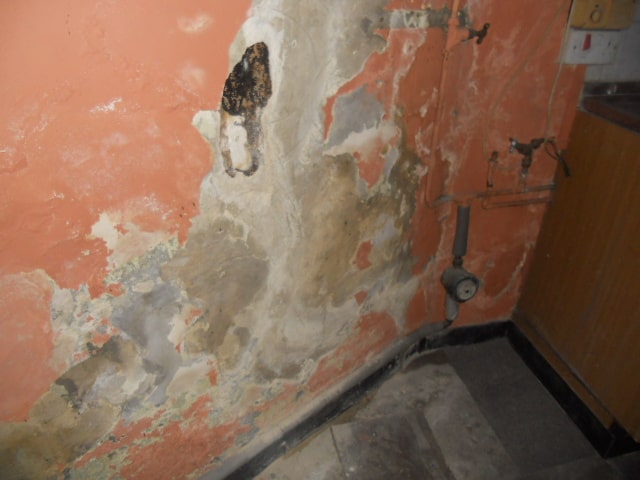
Condensation Damp
About 1 in every 5 homes in the UK are affected by condensation.
When an excess of moisture in the air reacts with a cold surface (i.e. a wall or window), condensation occurs and can build up causing damp patches, discolouration and eventually black mould. It can be easily prevented by wiping down cold surfaces and keeping bathroom and kitchen doors closed and windows open.
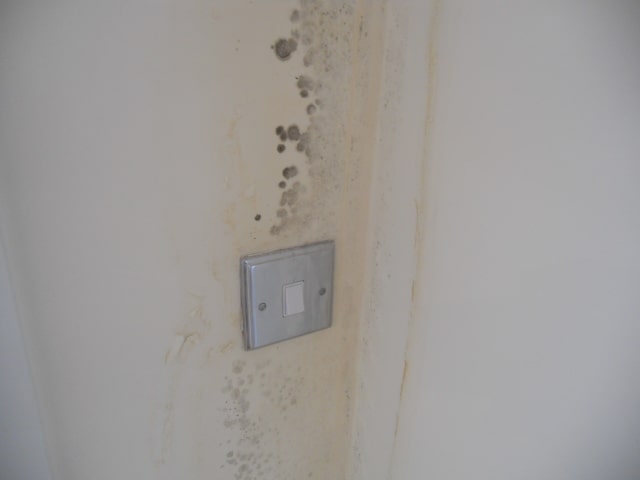
Interstitial Condensation
Interstitial condensation is more serious and can cause structural damage.
When moist air gets inside an enclosed wall, floor cavity structure or roof, it condenses into water. This moisture can come from either the inside or outside of the building, particularly during warm outdoor temperatures.
The damage interstitial condensation causes is scarcely visible until significant damage is done, as mould and bacterial growth behind the walls eats away at the structure way before it’s visible.
What should I do if a survey reveals dampness?
There are plenty of options to you if a survey reveals damp or another issue. If a survey reveals damp in a house you’re preparing to buy, here’s what you should do:
- Consult the surveyor – Ask for more details about the type and extent of the damp. Understanding the specific type of damp (such as rising or penetrating) helps gauge the severity and potential costs of fixing it.
- Get a specialist damp report – Arrange for a damp specialist to assess the issue in detail. They can provide a quote for repair costs and confirm whether it’s a minor issue or something more serious.
- Negotiate with the seller – Use the information from the damp report to negotiate with the seller. You can either ask the seller to fix the damp issue before proceeding or negotiate a reduction in the asking price to cover the cost of repairs.
- Consider your options: If the damp is extensive or costly to fix, you may want to reconsider whether to proceed with the purchase. Take into account the repair costs, potential future issues, and your willingness to deal with the problem.
- Factor repairs into your budget: If you proceed with the purchase, ensure you budget for the necessary repairs and any related work, like redecorating affected areas.
How to repair damage from damp
Repair depends entirely on the type of damp you have, and the extent of damage. Firstly, cleaning and drying any mould-covered surfaces is vital. After this, applying a damp seal and repainting over the damage is usually satisfactory if the damage is superficial. For more extensive damage, professional help may be required – particularly in the case of structural damage.
A chartered surveyor will be able to help you assess the extent of damage and offer recommendations for repair. Choosing a local surveyor is also a good idea, as they will be able to recommend the best professionals to fix the damage.
In terms of prevention, the key is to keep moisture levels in your property to an absolute minimum. Opening windows, drying clothes outside wherever possible and generally ensuring constant good ventilation (with extractor fans, for example) are day-to-day measures you can take to prevent damp. You should also make sure windows are properly sealed, fix any leaks immediately and ensure wall cavities are properly insulated.
If you are concerned about damp in your property in Sussex or the surrounding areas, contact Robinson Elliott Chartered Surveyors. We have the knowledge and experience to help prevent and treat any type of damp in your home and offer recommendations for repair wherever necessary.

